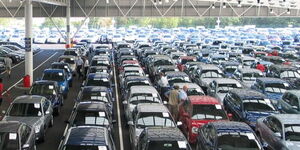With the planet experiencing a climate crisis, calls have been on the construction sector to push for green homes.
Future homeowners are seeking to reduce their carbon footprints and they are considering green home building ideas and technology as an alternative to traditional construction techniques.
The green building market share is expected to grow significantly, as is the number of builders who only build green homes.
In this article, we take a look at recommended techniques that one can adopt when settling for an eco-friendly house.
Construct a smaller house
Sustainable housing designs are generally small because more undersized homes are considered to be more efficient than larger dwellings.
Larger houses have a greater environmental impact than smaller ones, even when their energy efficiency is similar because the larger home depletes more materials and requires more energy for heating and cooling.
Compared to larger houses, small houses have evolved and become popular due to their low maintenance and energy efficiency.
Use environmentally friendly materials
During construction consider the following factors when choosing building materials: renewability, sustainable production, and recyclability.
Use of materials such as wood, bamboo, plant fibres, and other renewable materials that can potentially be replaced within a short period of time after harvesting should be harvested using sustainable management practices.
Using non-renewable materials like stone is reasonable since they can be reused or reclaimed.
Place your house correctly
When constructing your house take into consideration access to solar, daylighting, airflow, building proportions, floor elevations, and drainage strategies.
These are among the factors influenced by topography and adjacent landforms. The possibility of using gravity drainage systems is determined by the slope of the land.
Windows should be carefully evaluated in terms of number, size, and glass type because they do not contribute to solar heat gain during the cold season and lose more heat than insulated walls.
Opt for taller than wider
If you are building your home in an area inclined to be affected by extreme weather, consider building tall rather than wider to reduce the building's surface area.
When compared to a compact building, a wide and spread-out house loses more heat while a one-story spread-out house and a compact two-story house are more energy efficient.
Solar energy
Transition to solar energy, and make it the primary power source in your home. Solar, when combined with other green building ideas, can generate enough energy to power your entire house.
Indeed, governments around the world are increasingly providing various incentives to encourage more homeowners to use solar energy.
Go for a green roof
Roof thermal performance is critical because they receive the most solar radiation.
Green roofs, which are rooftops that are partially or entirely covered by vegetation, have a significant cooling effect on buildings by blocking sunlight from reaching the underlying roof structure and lowering temperatures.
This also contributes to the reduction of the urban heat island effect.
Use eco-friendly lighting
Artificial lighting eats into your home’s power bills. It is therefore significant to use lighting technologies such as LED and CFL, which can cut lighting energy costs.
Natural lighting can also help to reduce energy bills, especially in houses with good exposure that stops the need for artificial lighting during the day.
Daylight is also thought to have a positive impact on the mental and physical health of building occupants, resulting in happier, healthier lives.












